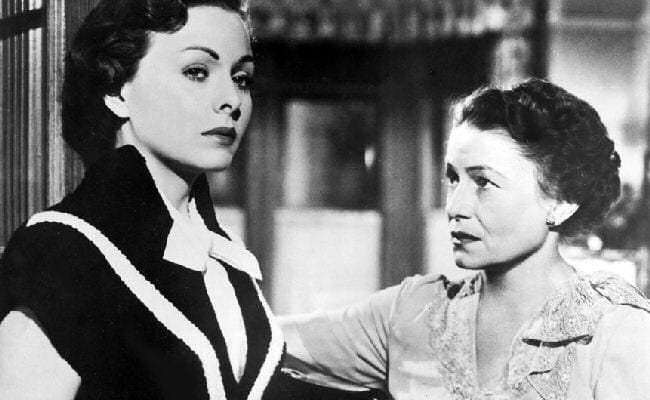
Available on demand from Fox Cinema Archives is an excellent print of this thoughtful dramatic comedy driven by dialogue and character. The engine is third-billed Thelma Ritter, who perfects her bustling, straight-talking, working-class, middle-aged, dumpy Brooklyn persona as Mae, the title marriage broker. She has an office in New York’s Flatiron Building. The business is vaguely called Contacts and Contracts, because there’s something “shameful” about being or using a marriage broker; one brief interlude suggests that certain men take it as a cover for prostitution.
Most of Mae’s clients are lonely, homely, middle-aged men and women, and although they are initially presented as a source of humor–the “big dumb Swede” (Frank Fontaine), the gangly spinster (Nancy Kulp)–the movie is ultimately on their side. Beautiful Jeanne Crain is the titular model whom Mae tries to fix up, gratis, with a certain handsome X-ray technician (Scott Brady) who narrowly avoided a previous match-up, but despite their top-billing (because they look good on the poster), their predictable story is almost sidelined by the focus on Mae and her myriad acquaintances, schemes, and self-doubts. We learn that she’s a divorced woman, forced to make a living, who has turned her energy and frustrations to the thankless task of helping others, and when she’s presented with a possible “happy ending” of her own, she has a surprising response.
An aroma of early 50s sexist stereotyping is easily detected, but the central idea that unattractive people need love and sex and companionship (defined safely as “marriage”) remains eternal. Older cultures had such professional busybodies (as seen in The Matchmaker), the catchphrase during the 70s was “computer dating”, and today we have internet hookups. This film is the urban, beady-eyed, mid-century version, full of cramped subways and busy streetcorners crammed with well-dressed extras. (I noticed an African-American couple in every crowd scene, a careful detail for 1951.) This bustling vision fits exactly with Cukor’s other contemporary stories of the era (Born Yesterday, A Life of Her Own, The Marrying Kind ). Cukor is famously a “woman’s director”, and as produced and co-written by Charles Brackett, this movie is less interested in Crain than the world of non-glamorous women.


![Call for Papers: All Things Reconsidered [MUSIC] May-August 2024](https://www.popmatters.com/wp-content/uploads/2024/04/all-things-reconsidered-call-music-may-2024-720x380.jpg)



